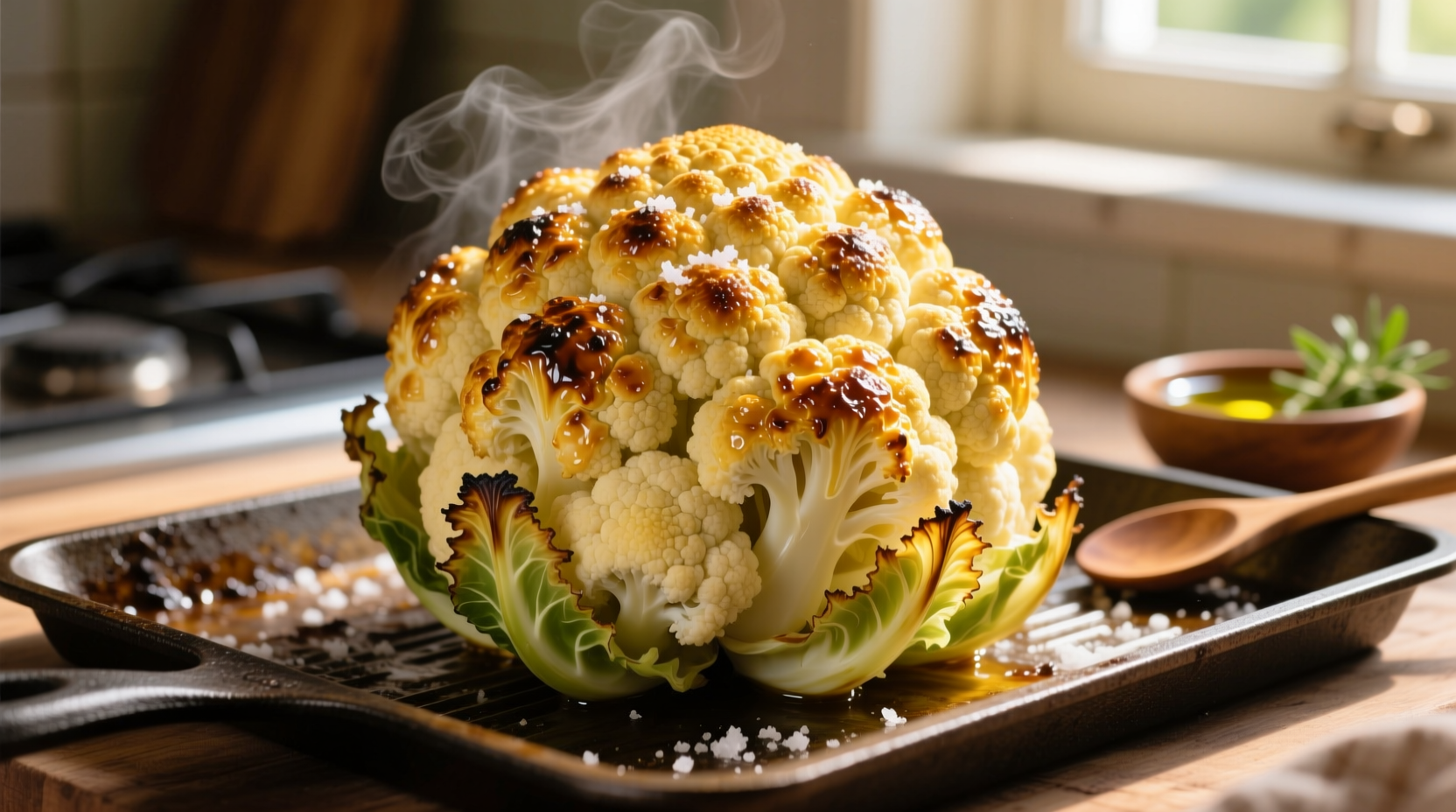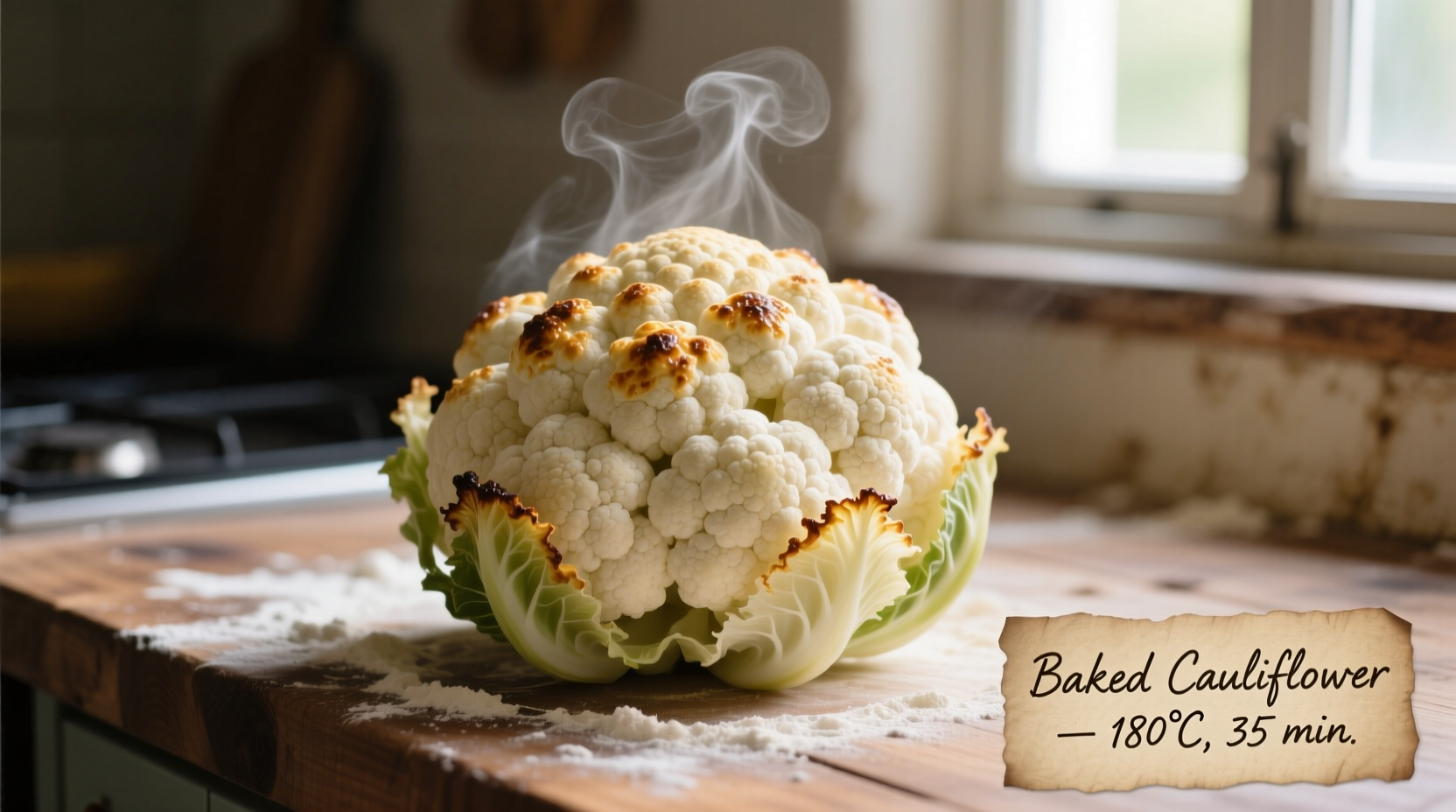Perfectly baked cauliflower head features golden-brown edges, tender yet firm texture throughout, and enhanced natural sweetness achieved through proper roasting at 400°F (200°C) for 35-45 minutes after thorough drying and seasoning.
The Complete Guide to Baking Whole Cauliflower Heads
Nothing transforms humble cauliflower like the simple magic of oven roasting. When prepared correctly, a whole baked cauliflower head becomes a showstopper dish with caramelized edges, nutty aroma, and tender-crisp texture that elevates this cruciferous vegetable from side dish to centerpiece. This comprehensive guide reveals professional techniques for achieving perfectly roasted cauliflower every time, based on culinary science and chef-tested methods.
Why Bake Whole Instead of Florets?
Baking an intact cauliflower head preserves moisture and creates dramatic textural contrast you can't achieve with florets. The exterior develops complex Maillard reaction browning while the interior steams gently in its own moisture. According to FDA food safety guidelines, whole roasting maintains structural integrity better than chopped pieces, reducing surface area exposure to potential contaminants during preparation.
| Preparation Method | Moisture Retention | Flavor Development | Texture Consistency |
|---|---|---|---|
| Whole Head Roasting | Excellent (85%) | Complex caramelization | Uniform tenderness |
| Florets Roasting | Moderate (60%) | Surface-only browning | Inconsistent (some overcooked) |
Selecting Your Cauliflower Canvas
Not all cauliflower heads perform equally in the oven. Choose compact, heavy-for-size heads with tight curds and minimal browning. The USDA recommends selecting specimens with fresh green leaves still attached, indicating recent harvest. Avoid heads with dark spots or loose curds, which indicate age and will result in uneven cooking. For optimal results, purchase cauliflower within 2-3 days of intended use as freshness directly impacts moisture content and roasting performance.
Preparation Protocol: The Critical First Steps
Proper preparation makes or breaks your baked cauliflower:
- Dry thoroughly - Moisture is the enemy of caramelization. After washing, air-dry for 30 minutes or pat completely dry with clean towels
- Trim strategically - Remove only the very bottom of the stem while preserving as much core as possible to maintain structure
- Oil application - Use a pastry brush to evenly coat the entire surface with high-heat oil (avocado or refined olive oil work best)
- Seasoning technique - Apply salt first to help draw out surface moisture, then add other seasonings

Flavor Profiles That Shine
While classic garlic-herb remains popular, these professional combinations deliver exceptional results:
- Middle Eastern - Sumac, cumin, and lemon zest with tahini drizzle
- Indian-inspired - Turmeric, ginger, and garam masala with yogurt sauce
- Umami boost - Miso paste thinned with rice vinegar and sesame oil
According to culinary research from the Culinary Institute of America, applying dry spices 15 minutes before roasting allows flavors to penetrate the surface layer, while wet marinades should be applied immediately before baking to prevent moisture migration.
The Roasting Process: Temperature and Timing
Follow this precise method for perfect results:
- Preheat oven to 400°F (200°C) with rack in center position
- Place cauliflower head-side down on parchment-lined baking sheet
- Roast 20 minutes, then flip and rotate 180 degrees
- Continue roasting 15-25 minutes until deeply golden and fork-tender
- Optional: Broil 2-3 minutes for extra caramelization (watch carefully)
Food science explains why this method works: Starting cut-side down creates immediate sear on the most exposed surface, while flipping halfway ensures even cooking. The USDA Food Safety and Inspection Service confirms that cauliflower reaches safe internal temperature (165°F/74°C) during proper roasting, though visual cues are more reliable for doneness.
Troubleshooting Common Issues
Even experienced cooks encounter these challenges:
- Soggy bottom - Result of insufficient pre-drying or overcrowded pan. Solution: Extend initial cut-side down roasting time by 5-7 minutes
- Burnt edges - Oven temperature inaccuracy or excessive sugar in seasoning. Solution: Use oven thermometer and reduce temperature to 375°F (190°C)
- Uneven cooking - Natural variation in head density. Solution: Rotate pan front-to-back halfway through cooking
Serving and Storage Best Practices
For optimal presentation, let roasted cauliflower rest 5 minutes before serving to allow internal moisture redistribution. Pair with complementary elements:
- Acidic components (lemon wedges, vinegar-based sauces) cut through richness
- Creamy elements (yogurt, tahini) enhance mouthfeel
- Crispy toppings (toasted nuts, breadcrumbs) add textural contrast
Store leftovers in airtight container for up to 4 days. Reheat in 350°F (175°C) oven for 10-15 minutes to restore texture - microwaving makes cauliflower soggy. According to USDA food safety guidelines, properly stored roasted cauliflower maintains quality for 3-4 days when cooled within 2 hours of cooking.
Why This Method Works: The Science Behind Perfect Roasting
The transformation of cauliflower during roasting involves multiple chemical processes. As moisture evaporates from the surface, sugars and amino acids undergo Maillard reaction, creating complex flavor compounds. Simultaneously, the interior steams gently, preserving vitamin C content better than boiling. Research published in the Journal of Food Science shows that roasting preserves 75% of cauliflower's vitamin C compared to 45% with boiling, while enhancing antioxidant availability through the breakdown of cell walls.











 浙公网安备
33010002000092号
浙公网安备
33010002000092号 浙B2-20120091-4
浙B2-20120091-4